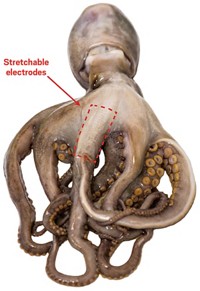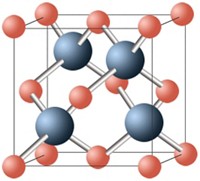Advertisement
Grab your lab coat. Let's get started
Welcome!
Welcome!
Create an account below to get 6 C&EN articles per month, receive newsletters and more - all free.
It seems this is your first time logging in online. Please enter the following information to continue.
As an ACS member you automatically get access to this site. All we need is few more details to create your reading experience.
Not you? Sign in with a different account.
Not you? Sign in with a different account.
ERROR 1
ERROR 1
ERROR 2
ERROR 2
ERROR 2
ERROR 2
ERROR 2
Password and Confirm password must match.
If you have an ACS member number, please enter it here so we can link this account to your membership. (optional)
ERROR 2
ACS values your privacy. By submitting your information, you are gaining access to C&EN and subscribing to our weekly newsletter. We use the information you provide to make your reading experience better, and we will never sell your data to third party members.
ACS Meeting News
Flexible integrated circuits are now stretchable and more powerful
Fishnet-like structures of carbon nanotubes give these integrated circuits the ability to bend and stretch
by Payal Dhar, special to C&EN
March 21, 2024
| A version of this story appeared in
Volume 102, Issue 9
To make stretchable electronics, engineers must start with materials that can tolerate strain. That’s why the ability to endure being stretched is a sought-after quality in flexible electronics, especially for wearable and implantable devices for health monitoringand treatment.

Recently, researchers at Stanford University have designed and developed materials that can be used to make stretchable integrated circuits that are one-fifth the size and operate at 1,000 times higher speeds than earlier versions. As proof-of-concept, they demonstrated a Braille-sensing system that can read a whole word instead of just letters, and a micro-LED screen (Nature. 2024, DOI: 10.1038/s41586-024-07096-7).
The researchers used carbon nanotubes (CNT) as the semiconducting material. Even though a single CNT is very difficult to stretch, a network of them does the trick. “Our stretchable transistor arrays and integrated circuit have performance that’s on par with commercialized flexible integrated circuits,” said chemical engineer Zhenan Bao. Bao was the lead investigator of the study and presented the work at the ACS Spring 2024 meeting in New Orleans on Tuesday in the Division of Polymeric Materials Science and Engineering.
For integrated circuits, the basic building block is a thin-film transistor—transistors amplify or switch electronic signals in a circuit. They are comprised of several different materials, Bao explains: a conductor for the electrodes and the interconnects; a semiconductor for the current to flow through; and a dielectric layer that separates the electrodes from each other (to prevent a short circuit). This research has taken Bao and her team about a decade. They had to develop all the materials and the circuit design, as well as the fabrication methods.
The stretchable transistors are made from semiconducting carbon nanotubes and soft elastic materials that sandwich the nanotubes. Bao’s team also developed the patterning chemistry in all the layers, so that the electronic properties of the materials are not degraded during fabrication. The fabrication process had more than 100 steps. This meant, even if each step had a yield of 99%, the final yield might be quite low, Bao said. “So it is really important that every step has very high yield.”
The CNT’s fishnet-like structure allowed them to maintain their integrity while been stretched. The transistors, along with the semiconductor, conductor, and dielectric material, are patterned onto a stretchable substrate. All of this was done on a micron scale. “We made a sensing circuit of 1,000 transistor arrays that fit into 1 mm2, smaller than the size of a sesame seed,” Bao said.
The researchers demonstrated their circuit with a tactile array that is more than 10 times more sensitive to human fingertips. Another demonstration was a micro-LED display, with a refresh rate similar to that of a computer screen. This was a first, Bao said: “Previously, it was not possible to use stretchable transistors to power [micro-LEDs] because their current output was insufficient.”
Bao’s team is looking forward to expanding the applications of their work, as well as reducing its energy demands. Currently, many electronics use CMOS (complementary metal-oxide semiconductor) circuits that have lower power consumption. “That will be something we want to start to develop,” she said. “And the materials can always be improved to have even better performance.”
Di Wu, a materials scientist at the University of California, Merced, who was not involved in this study, said the work is remarkable for its high electrical performance, stretchability, and possibility of large-scale integration. Because the researchers had been using fabrication tools that are already in use for the microelectronics industry, Wu said, “the fabrication process is promising for scaling up.”





Join the conversation
Contact the reporter
Submit a Letter to the Editor for publication
Engage with us on Twitter